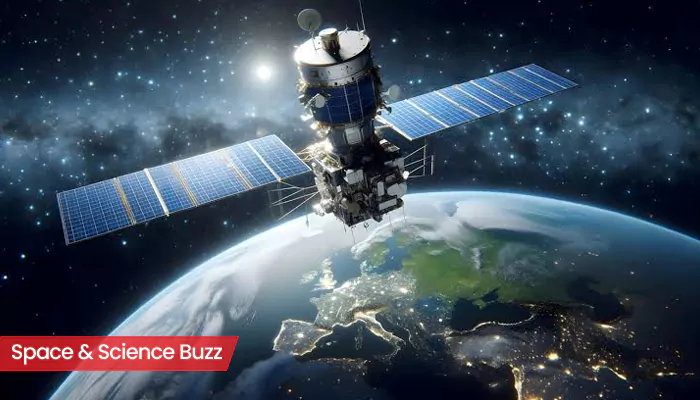
Here are today’s most important updates from the realm of Science and Space.
Earthquakes, the ripples beneath the planet from collision of tectonic plates, not only damages assets on the surface but also above the planet in space. Scientists used dense network of over 4,500 Global Navigation Satellite System (GNSS) receivers and produced the first 3D visualisation of atmospheric disturbances triggered by the 7.5-magnitude Noto Peninsula Earthquake on January 1, 2024. The study unveils how seismic activity generates complex sound waves in the ionosphere, disrupting satellite communications and challenging prior scientific models. Ionospheric disturbances can degrade GPS accuracy and satellite communications. This research marks a leap toward safeguarding critical infrastructure while deepening our grasp of Earth’s interconnected systems.

(Credit: X/@ROGAstronomers)
An object about 700 kilometers wide has been detected in the frigid region of the Solar System that might qualify as a dwarf planet. A dwarf planet is a type of celestial body in our solar system that shares some similarities with regular (major) planets but doesn’t meet all the criteria to be classified as one. Dubbed 2017 OF201, the object is trans-Neptunian orbiting the sun at a distance beyond that of Neptune. The object takes about 25,000 years to complete a single orbit of the sun, compared to 365 days for Earth to do so.Scientists estimate its mass is about 20,000 times less than Earth’s and 50 times less than Pluto’s. The presence of this single object suggests that there could be another hundred or so other objects with similar orbit and size.

A recent study showed that the sound of a clap is not just due to two hands smashing into each other but rather a much more complex phenomenon. The noise comes from a cavity of air that is compressed and pushed out of a small space. The compressed air behaves like a Helmholtz resonator. This is the same principle behind blowing across a bottle's mouth. The palms create a cavity, and the gap near the thumb acts like a neck. The scientists confirmed that air escapes through the opening between the thumb and index finger. This air jet vibrates and creates sound waves. The study findings showed a clear relationship between clap speed and volume. Faster claps compress the air more, creating stronger air jets and louder pops. The study also showed that each person's handclap is unique owing to the cavity shape, skin elasticity and rhythm. This may make it useful in identity recognition.

Evolutionary biologists define a parasite as a species that benefits from a close relationship with another species – its host – while the host bears a cost. Smartphones have radically changed our lives. From navigating cities to managing chronic health diseases such as diabetes, these pocket-sized bits of tech make our lives easier. So much so that most of us are rarely without them. Phone users are paying the price with a lack of sleep, weaker offline relationships and mood disorders. The human-smartphone association began as a mutualism. The technology proved useful to humans for staying in touch, navigating via maps and finding useful information. Now, we need restrictions on app features known to be addictive, and on the collection and sale of our personal data to get rid of this parasite.